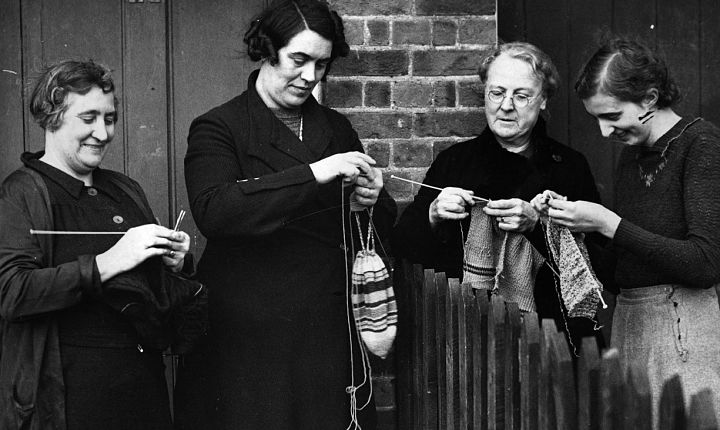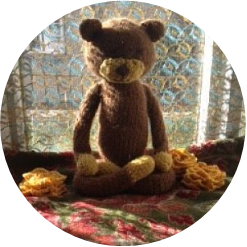Knitting - a seditious activity
This blog first appeared on the Guardian website
In the dark recesses of one of my many boxes of wool stash is a pattern book dating from the 1960s.
It contains instructions on how to knit anything from a baby's matinée jacket to a twin-set. The book is very much of its time; I am not in a hurry, for instance, to crochet the rainbow kaftan. However, it is the fact the book contains such a pattern that dates it the most. The assumption being that no matter how groovy and happening you were, you would still be able to rustle up a granny-square bikini.
Since those heady, kaftan-clad days, the necessity to be able to knit, weave, spin or sew has been rendered redundant by cheap clothing. A dramatic increase in the amount of women working outside the home reduced the inclination to make their own garments. Needlecraft was the relic of women's domestic servitude. It became the province of the grandmother – old-fashioned and something you did if you were a little frail and didn't get out much.
In recent years, there has been a revival of interest in crafts, partly fuelled by celebrity knitters such as the Duchess of Cambridge and Kate Moss. According to the UK Hand Knitting Association, there has been a 12% increase in people participating in crafts year on year, while Google reports a 70% increase over the last year in searches for 'knitting and crochet'. Wool shops now are places of luxury offering cappuccino while you browse designer, hand-dyed yarns. Knitting not as necessity, but art – for women who have just too much time on their hands.
Needlecraft, it seems, is just not relevant to the reality of modern women's lives.
Yet historically it has been a potent symbol of power. Athena, the Greek goddess of, among other things, wisdom and warfare, was also the patron of crafts - famously entering into a weaving contest with Arachne to establish her supremacy. That such an important goddess possessed these skills clearly demonstrates the regard with which they were held.
Spinning goddesses pop up all over the world, and witches, the embodiment of unchecked female power, spun and 'wove' spells. The enduring image of the power of the spinner is handed down in fairy tales; the wicked fairy, for example, who threatened the happiness of an entire kingdom with her spindle. The king decided the apparatus was so seditious he destroyed every one in his realm – well, nearly.
There is indeed a magic in taking an unpromising fleece or ball of wool and turning it into something lovely to wear. But there is something more fundamental at work to do with our basic needs for warmth, food and shelter. We are empowered when we can meet those needs ourselves.
Mahatma Gandhi understood this. Asked, aged 64, what his occupation was, he said: 'I am a spinner, weaver and farmer.' He took up spinning and urged his countrymen to do so ostensibly to rid India of cheap imports of cloth, but also because he recognised the deep and enduring power of self sufficiency and self reliance.
'Spin and spin after due deliberation', said Gandhi. Or knit, either way you are engaging in a life affirming and subversive activity. Anyone for a kaftan?



